您可以在下一个项目中使用的不同类型的 LED
当今市场上有多种类型的 LED,很难知道哪种 LED 适合您的下一个项目。在这篇博文中,我们将讨论不同类型的 LED 及其应用。我们还将提供一些提示,帮助您根据需要选择合适的 LED。
什么是 LED 灯?
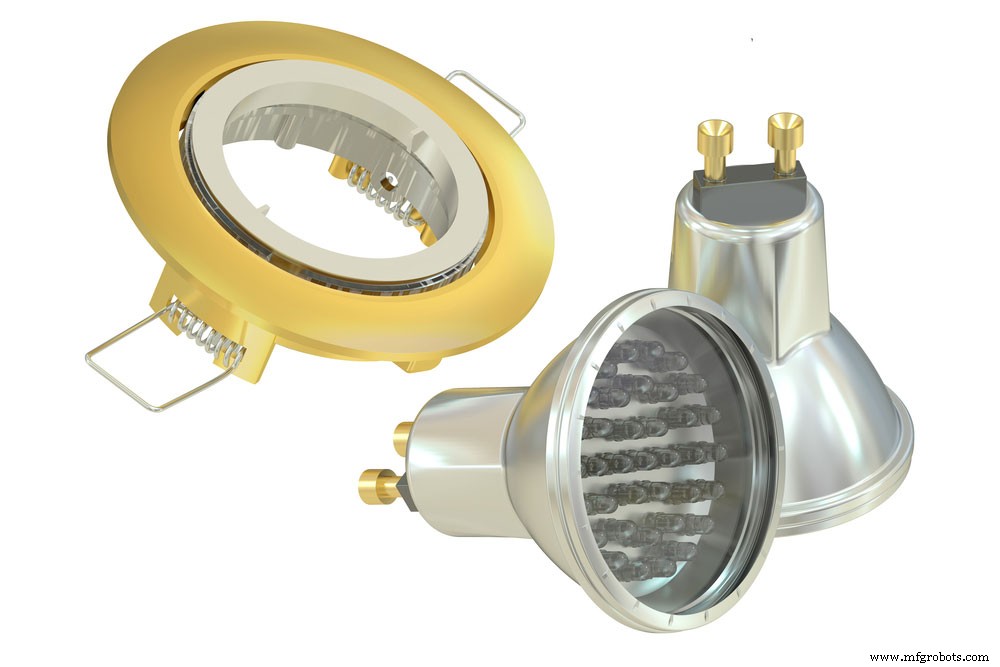
长寿命 带 LED(发光二极管)灯的嵌入式灯
“LED”是“发光二极管”的首字母缩写,是一种将电转化为光的半导体技术。 LED 是一种特殊类型的二极管,当电流通过时会发出可见光。
LED 照明仅在市场上出现了几十年。人们在 1960 年代首次创造了初级 LED 照明,大约在第一个灯泡出现 100 年后。在 1970 年代,LED 可用于计算器和手表等电子设备。但直到 2000 年代中期,LED 照明才变得廉价并普遍应用于普通照明应用中。
在 PN 结二极管中,当电压正向使用时,电子和空穴在 PN 结中复合,以光(光子)的形式释放能量。 LED 发出的光的颜色取决于用于创建 PN 结的材料。
LED的颜色通常是单色的,这意味着它具有单一的色调,并且取决于半导体中的能带隙。
LED 的电气符号
LED电路符号很容易理解。 LED 符号包括一个二极管符号,带有两个指向外部的箭头,表示光是从设备发出的。
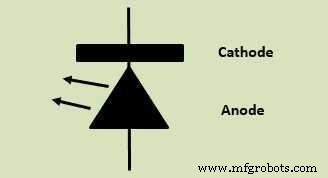
LED电路符号
当仅将发光二极管符号显示为轮廓而没有填写表格时,通常暗示您不应将它们与酸一起使用。大纲形式也可以。
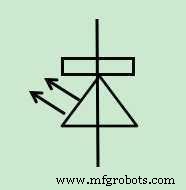
发光二极管替代,LED 电路符号
电路板和其他组件的外部也可能带有 LED 符号。发光二极管符号偶尔会被圆圈包围。虽然这个标志不再那么流行了,但你可以在很多赛道上看到它。
LED(发光二极管)的特性
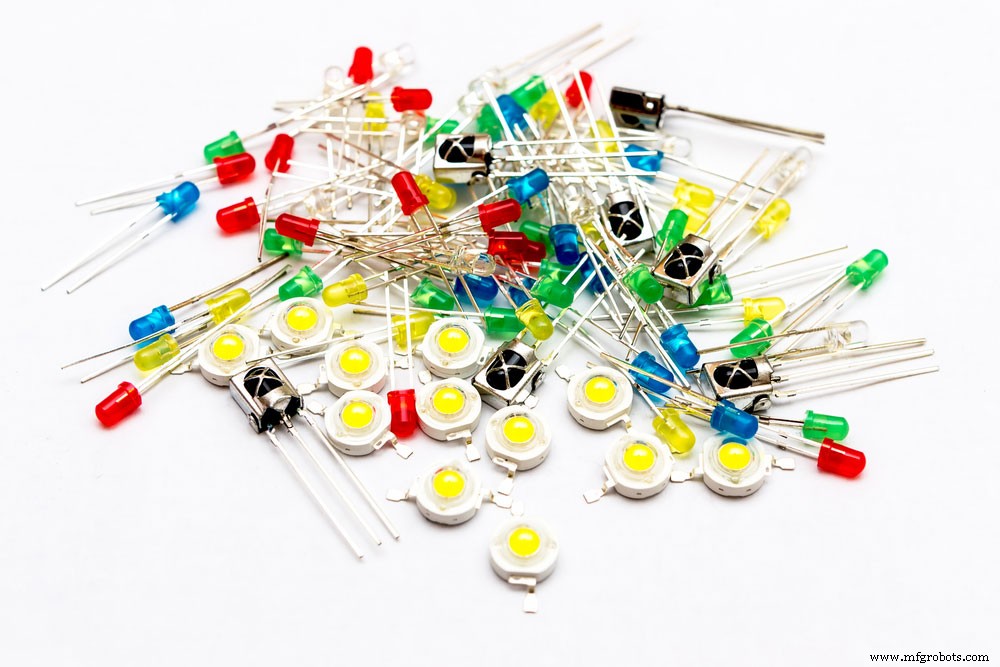
一堆彩色 3mmq、1W LED — 发光二极管和红外接收器
在将 LED 连接到电路并使用它之前,您应该了解 LED 的一些特性。这些特性是 LED 的正向电压 (Vf)、正向电流 (If) 和极性。
LED的正向电压
这是额定电压的另一个术语,即 LED 可以使用多少功率。此外,LED的导电电压是多少。例如,所有 5mm LED 的额定电流均为 20mA,但正向电压各不相同。
不同颜色的 LED 的最大额定电压略有不同。 LED 的最大额定电压为 3.2 伏,而红色 LED 的最大额定电压为 2.2 伏,蓝色 LED 为 3.4 伏,白色 LED 为 3.6 伏(电压越高的 LED 需要的电流越多)。
LED的正向电流
LED 的电源是直流 12V 电池,您必须每 100-150 小时充电一次,具体取决于 LED 的类型。由于 LED 是敏感设备,流过它们的电流量至关重要,因此确保它们正确连接至关重要。
LED 的亮度还取决于通过它的电流量。电流太大会损坏 LED,而电流太小会使 LED 变暗。 LED的最大正向电流为20mA。
但是,不同颜色的 LED 具有不同的最大正向电流。例如,红色 LED 的最大正向电流为 30mA,而蓝色 LED 的最大正向电流为 50mA。
LED的极性
组件的极性是对称性的度量。发光二极管和 PN 结二极管一样,是非对称的,只允许电流沿一个方向流动。
上图中的箭头显示了传统电流的方向,从正到负。 LED 上较长的引线始终是正极引线(阳极)。
较短的引线始终是负极引线(阴极)。如果您颠倒 LED 的极性,它就不会亮起。提供过多电流可能会损坏 LED,因此在 LED 上串联一个电阻器非常重要。
当 LED 正向偏置时(即,当它相对于阴极向阳极施加电压时),电子能够与器件内的空穴复合,以光子的形式释放能量。这种效应就是电致发光,光的颜色(对应于光子的能量)取决于半导体的带隙。
LED 灯的工作原理是什么?
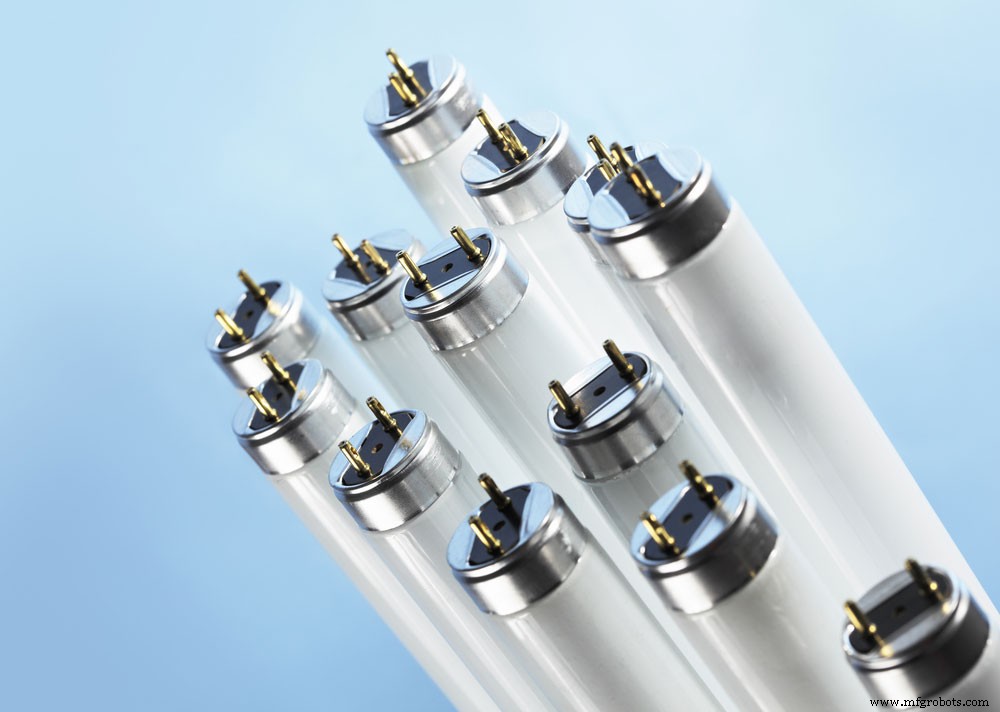
荧光灯管,蓝色背景的普通 LED
发光二极管 (LED) 是一种将电能转换为可见光的半导体器件。 LED 包含一种称为半导体的材料,它是一种可以导电的物质。用于制造半导体的两种材料是金属和非金属。硅和锗是人们用来制造半导体的非金属的例子。
当您向 LED 施加电能时,器件内的电子与器件内的空穴复合,以光子的形式释放能量。这种效应就是我们所说的电致发光,而光的颜色(对应于光子的能量)取决于半导体的带隙。
有哪些不同类型的 LED 灯?
LED 照明的两种主要类型是传统 LED 和有机 LED (OLED)。以下是 LED 类型列表:
表面贴装二极管 (SMD) LED
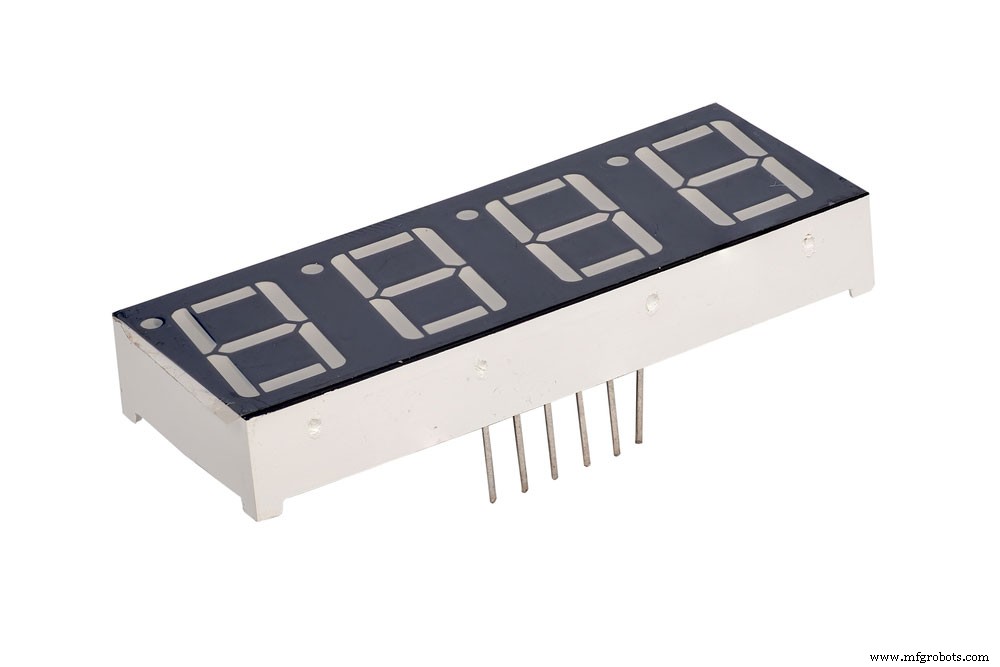
白色隔离背景上的表面贴装 7 段二进制数字
它们连接到 PCB 板上并焊接到位,这可能是最常见的 LED 芯片类型。表面安装的 LED 比它们的通孔表亲更亮,并且具有各种形状。最常见的类型是 3528 和 5050 包。
3528 LED 更小,使用更少的电流,并且不如 5050 亮。它们通常用于空间狭窄且散热不那么重要的背光或柜下照明。
5050 LED 略大,三脚而不是两脚,这使得它们比标准灯泡的传统照明方法更好地散热。这使得它们更加通用,因为它们可用于大功率应用,如汽车前灯或其他更高光输出的表面安装设备。
通孔 LED
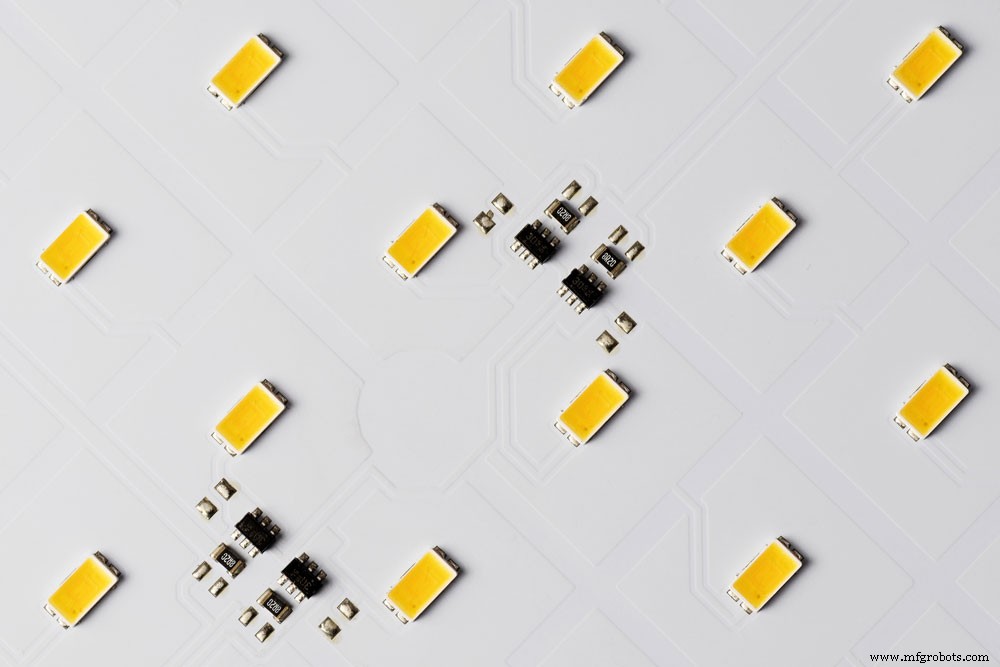
白铝顶视图 带有 SMD LED 和微芯片的电子电路。
LED 有各种形状和尺寸,最受欢迎的是 3mm、5mm 和 8mm。 LED 有多种颜色可供选择,包括红色、蓝色、黄色、绿色和白色。
板上芯片 (COB) LED
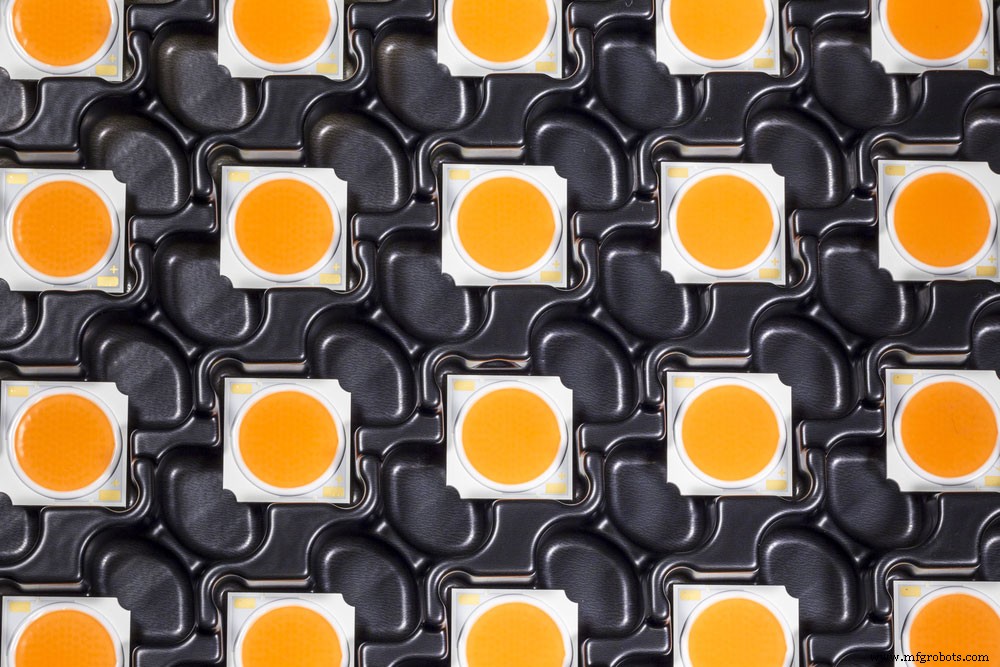
黑色托盘上的 COB LED
COB 是一种板载芯片类型,可产生比 SMD 更强大的控制光束。此外,它有一个更简单的选择,因为人们将它设计为向特定方向发光。
双色 LED 和三色 LED
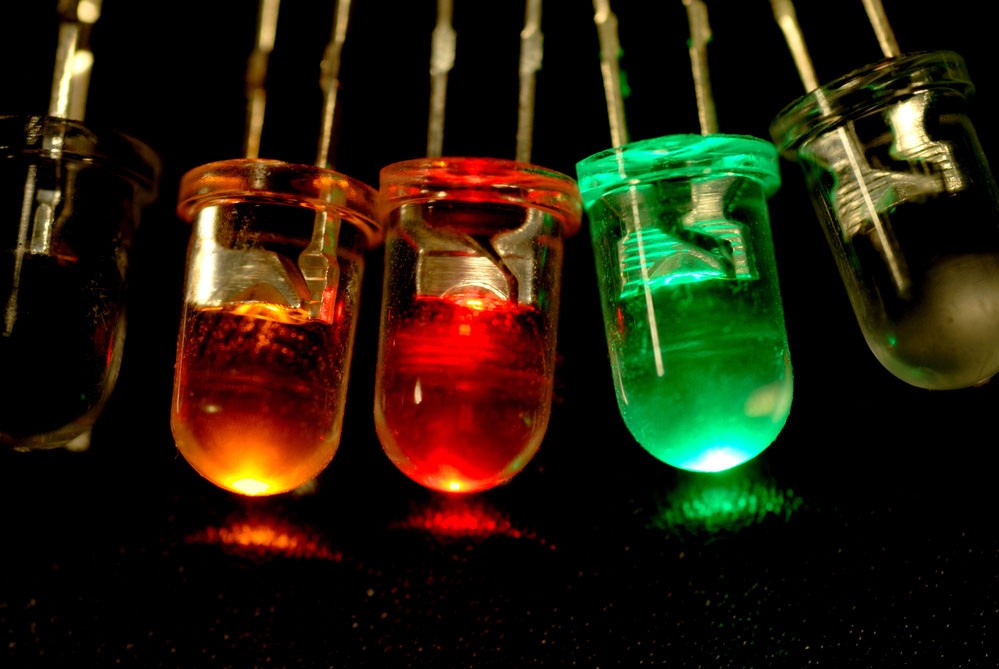
彩色 LED
这些类型的 LED 在一个 LED 中具有两种或三种颜色。双色 LED 有红色和绿色,而三色 LED 有红色、绿色和蓝色。我们经常将它们用作状态指示器,因为它们会根据您施加的电压发出不同的颜色。
大功率 LED
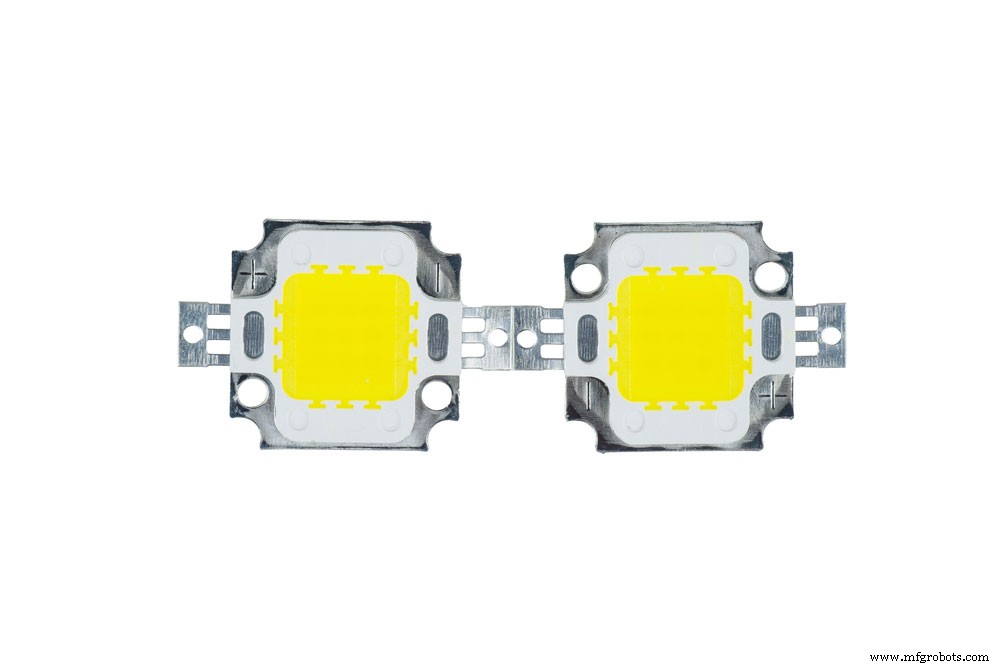
两个大功率 SMD 白色照明 LED 被隔离在白色背景上。
通常,我们测量 LED 可以消耗的功率(以瓦特为单位)。这些是带 LED 的漂亮手电筒。您甚至可以使用它们的阵列创建聚光灯和汽车前照灯。因为有如此多的能量通过 LED,所以它们几乎总是需要散热器。散热器是具有很大表面积的金属块,可用于帮助散发 LED 灯的热量。
双列直插式封装 (DIP) LED
DIP LED 芯片是最初的 LED,很多人在听到“LED 灯”这个词时都会想起它们。 DIP LED 芯片虽然比年轻的同类产品更老,但今天仍在使用,并且由于尺寸小而更普遍地存在于内置设备中。尽管如此,它们并不是很亮,只能产生有限的光量。
RGB LED(红 - 蓝 - 绿 LED)
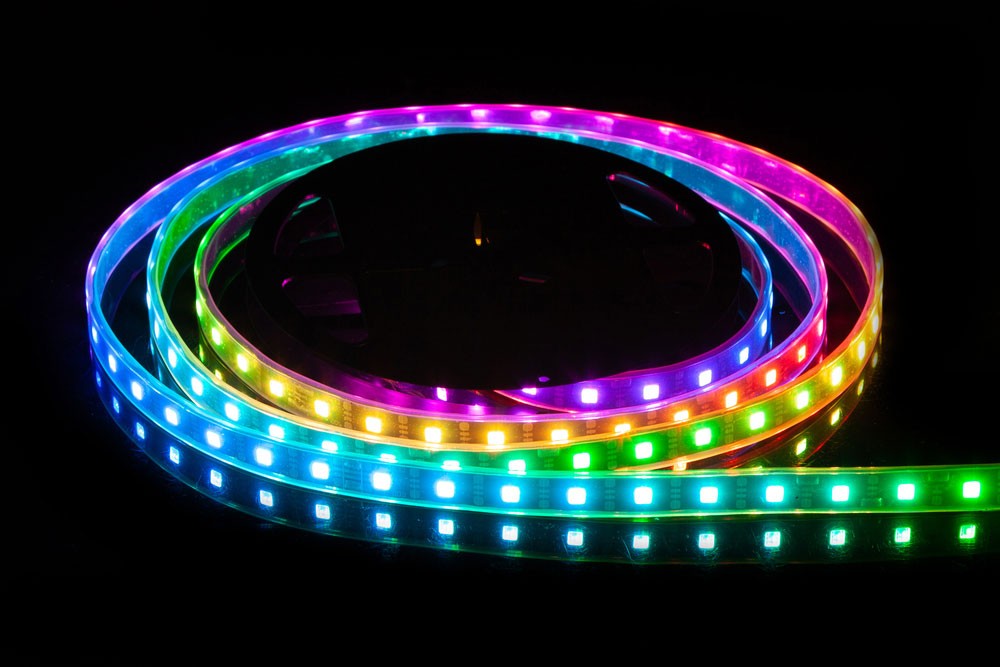
黑色背景卷轴上的 RGB LED 灯条
RGB LED 由三个连接在一起的独立 LED 组成。但这并不意味着他们只能生产三种颜色。您可以修改每种颜色的强度以创建彩虹的每种色调,因为红色、绿色和蓝色是主要的加色。 RGB LED 有四个端子:每种颜色一个,以及一个共享引脚。
调光开关
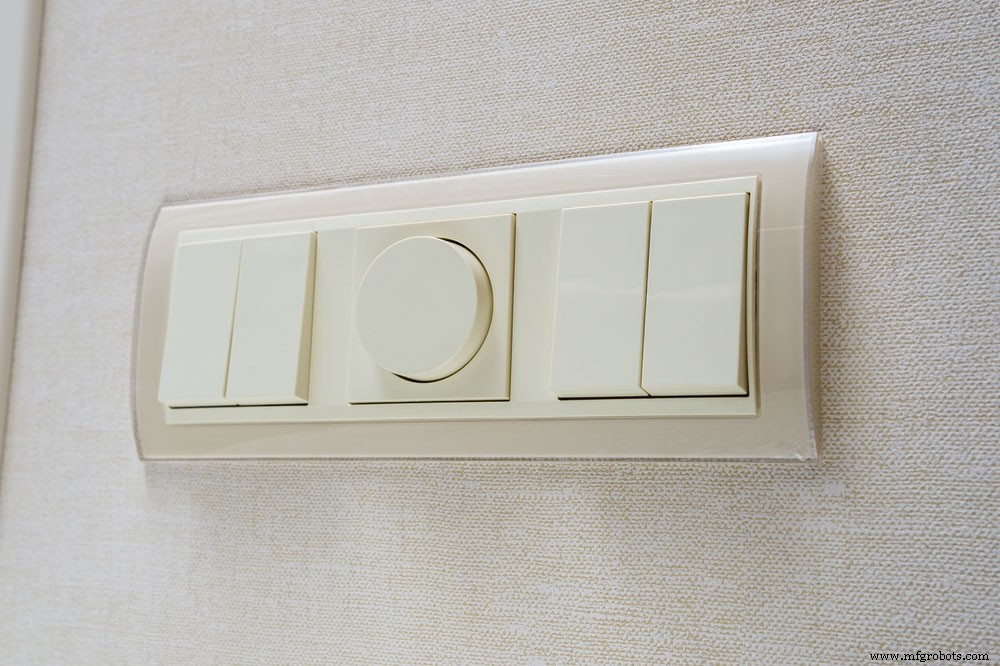
墙壁系列中带调光器的开关
与其他类型的灯一样,您也可以为您的 LED 灯找到调光开关。这些类型的开关控制着流向灯泡的电量。
与 LED 灯泡的调光开关相比,标准白炽灯泡的调光开关无法有效发挥作用。
因此,有人建议用LED代替传统灯泡,因为它们比其他类型的灯泡耗电少。
有机 LED
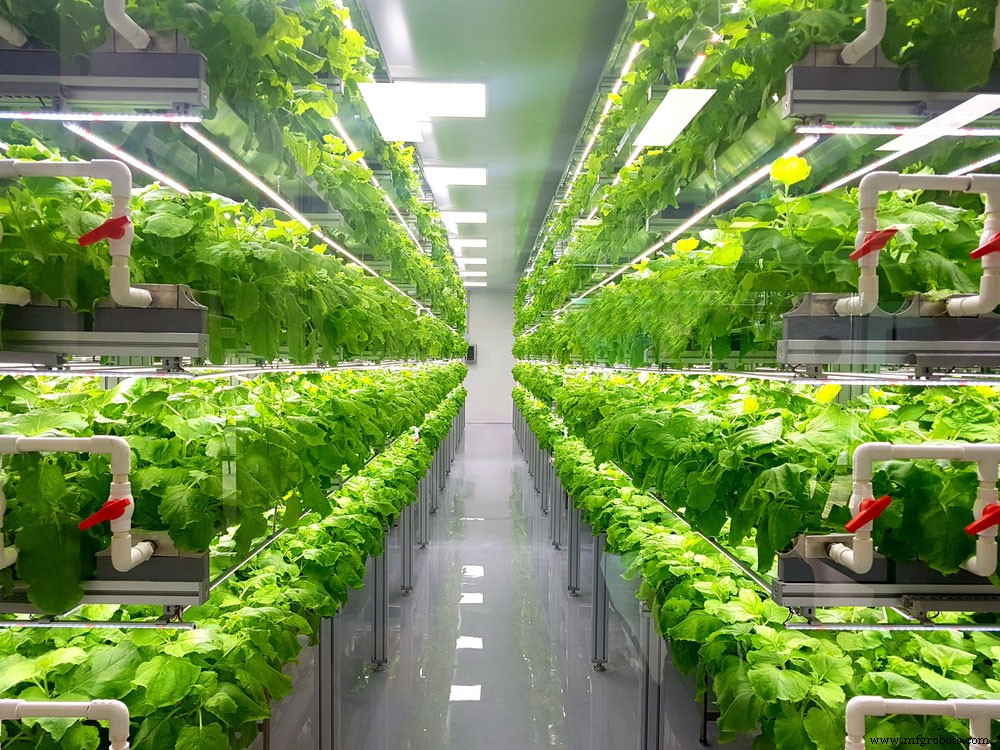
垂直农场上的植物与一起生长 发光的 LED 灯。
有机 LED 背后的基本概念是发光二极管。 LED,顾名思义,包含有机成分。基础发光二极管从作为关注焦点的特定 PN 结发出光。有机 LED 以薄片形式存在并产生漫射光。
它通常是沉积在玻璃基板上的薄膜物质。然后,它通过半导体元件将电脉冲传输到嵌入式像素,从而使 LED 发光。 LED 技术继续以惊人的速度发展,无论是在效率还是复杂性方面,它在任何领域的应用都没有限制。
石墨烯 LED
2015年底,热门频道BBC宣布光的发展将采用石墨烯涂层的LED灯丝。它比典型的灯泡效率更高,并声称可以为用户节省约 10% 的能源费用。石墨烯的使用最初是由一位在曼彻斯特大学工作的科学家开发的。比赛正在进行中,它有助于发现耐用材料的创造性用途。
最大亮度 LED
术语高强度LED是指发光二极管无机LED(通常缩写为ILED)。在照明和装饰领域,人们已经使用了这种类型的LED。然而,直到 2010 年代初,无机 LED 才变得足够强大,可用于一般照明用途。高强度 LED 也被用作传统光源(如白炽灯和荧光灯)的替代品。这些类型的LED寿命长、节能。
彩色 LED
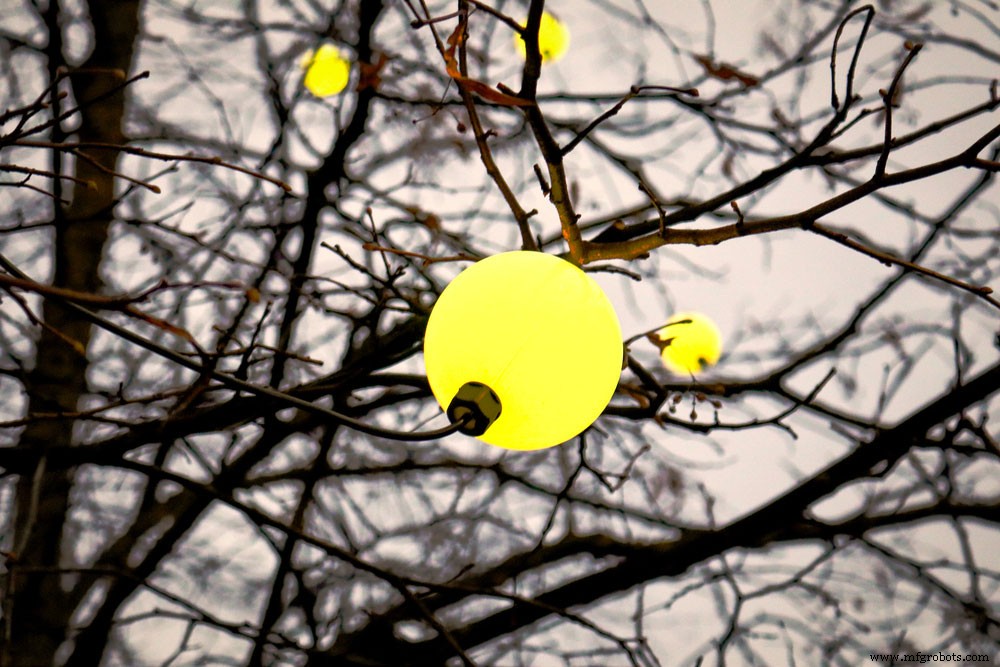
在无叶树和棕褐色夜空背景上挂在树枝上的球形黄色灯泡
彩色 LED 吸引了大家的眼球,共有三种色调可供选择:冷白 LED、暖白 LED 和日光 LED。暖白色卤素灯泡是室内照明最受欢迎的选择。日间 LED 中的淡蓝色调,以纯白色为基调,带有一丝蓝色,主要是为了衬托出实际的色调。
带集成电路的 LED
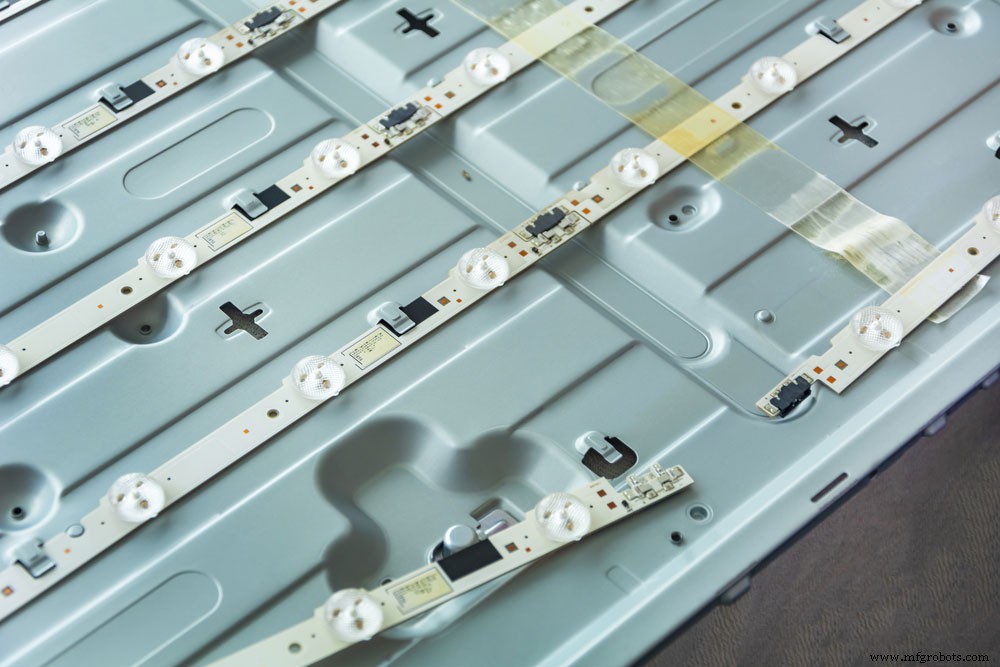
LED 电视特写上的 LED 电路板
-可寻址 LED
您还可以单独对具有不同波长的 LED 进行编程。使用具有不同颜色控制程度的不同芯片组(WS2812、APA102 和 UCS1903)可以控制单个 LED。
-循环 LED
LED 并非都是一样的。以循环 LED 为例。这些 LED 中有一个集成电路,可以让它们在不使用外部电源的情况下闪烁。
-内置电阻
带小限流电阻的 LED 也是带内置电阻的 LED。柱上有一个微小的黑色方形 IC,用于限制这些 LED 上的电流。因此,打开电源并使用内置电阻点亮 LED!
特殊 LED
-红外 LED
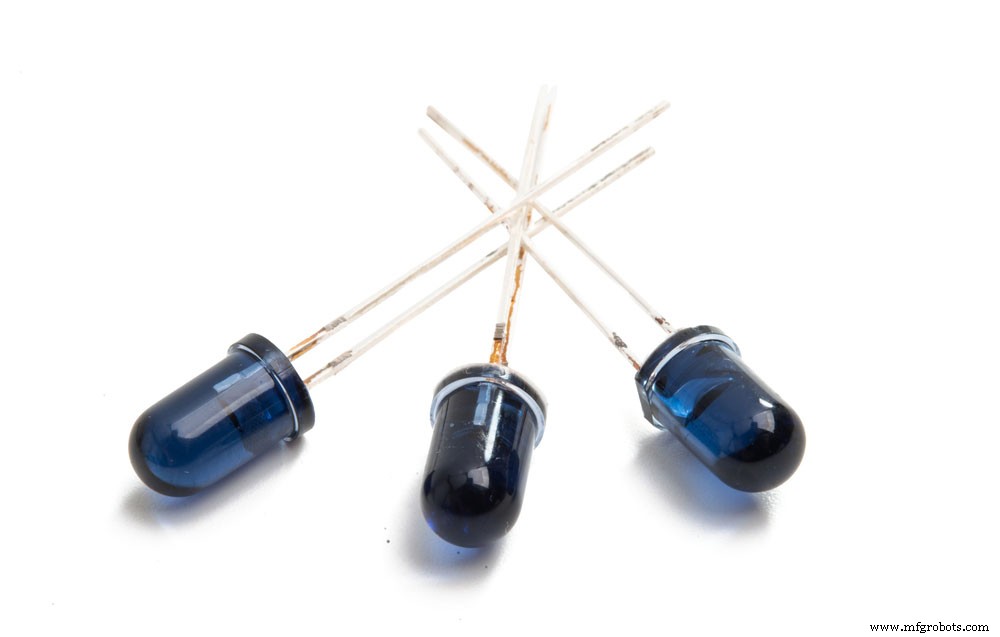
红外 LED 被隔离在白色背景上。
有些 LED 会发出可见光谱之外的光。例如,红外 LED 非常常见。您可以在电视遥控器中使用它们通过不可见光传输少量信息!这些可能类似于普通的 LED,因此很难与它们区分开来。
-紫外线 LED
您还可以在光谱的低端获得 UV LED。紫外线 LED 会导致某些材料发出荧光,就像黑光灯一样!它们也可用于消毒表面,因为许多细菌对紫外线敏感。您可以将它们用于伪造检测信用卡、票据等。
迷你 LED
这些微型 LED 的基本用途是装饰。可能有一串小 LED 灯或单独使用。它们有多种颜色。
mini LED 灯最重要的方面是它们的小尺寸,这就是为什么它们可以在汽车和其他需要空间效率的地方使用。
字母数字 LED
字母数字 LED 有七段、星爆和点阵形式。七段式可以显示所有数字以及有限数量的字母。
所有字母都可能出现在 Starburst 显示器上。在点阵显示器的情况下,它以 5 x 7 像素表示每个字符。 The popularity of seven-segment LED displays waned in the 1970s and 1980s as liquid crystal displays with reduced energy requirements and greater display flexibility increased.
Flashing LEDs
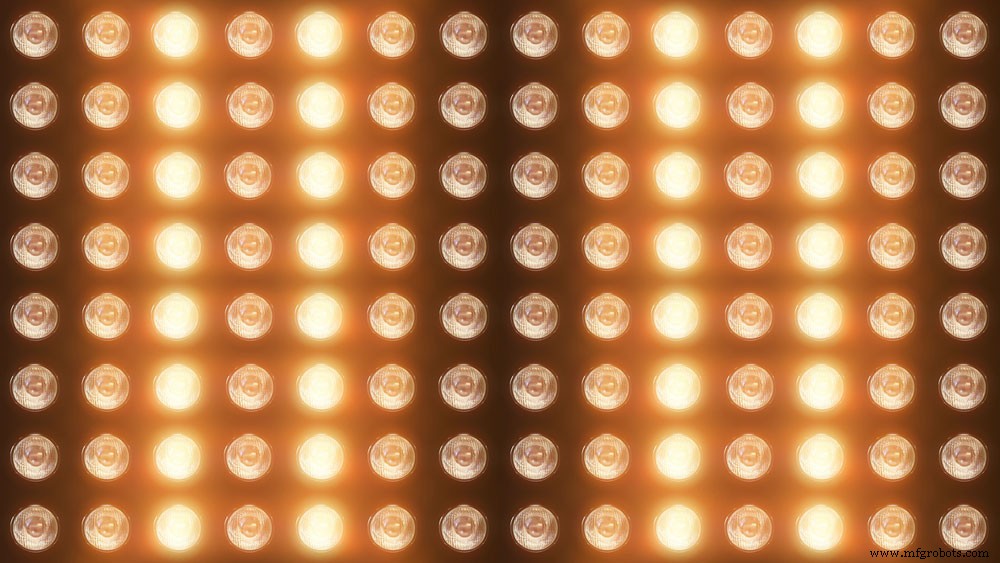
3D rendering of a wall with flashing lights and bright spotlights.
LEDs that are constantly on can be used as attention-seeking signals without the need for an external device. Flashing LEDs look like ordinary LEDs but include a built-in voltage regulator and multivibrator circuit, allowing them to flash with a one-second rhythm.
When viewed in a diffused lens LED, this circuit appears as a tiny black spot. The majority of flashing LEDs give off one color of light, although more advanced devices can flash between colors and even fade through colors in an order using RGB color mixing.
Simple LED Circuit
There are several interesting LED Circuit Project ideas to explore.
Such as LED Pilot Ligh, LED Battery Tester, LED Nightlight, led display, and more.
You may need the materials like led tubes/ led bulbs.
For additional basic LED Circuits, please see here.
The benefits of using LED lights over traditional light bulbs
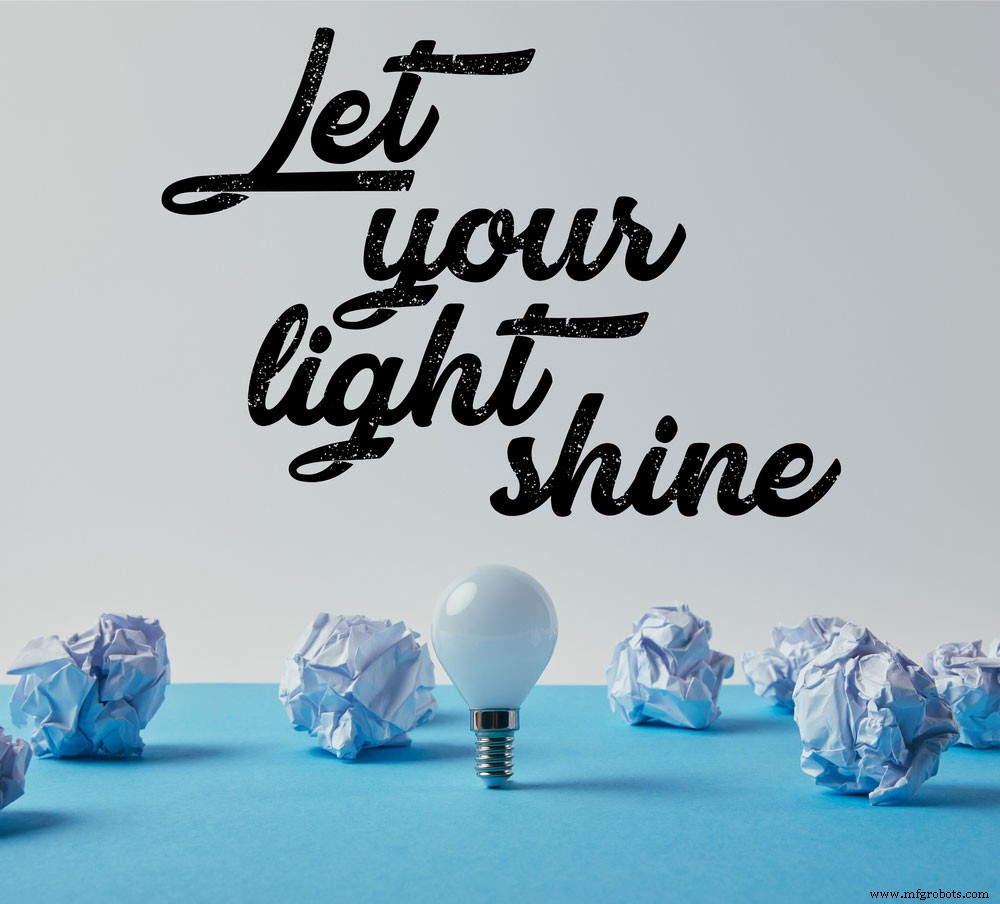
led to light bulbs with crumpled papers on the blue surface
LED lights have a number of advantages for industrial and commercial enterprises that want to lower their power consumption and costs. Here are some of the benefits of LED lights.
Lower power consumption
LEDs are more efficient than incandescents because they produce light in large with relatively little energy.
LEDs convert over 70% of the electricity they consume into light, which is far better than other bulbs that waste a lot of power by converting it to heat. A 6-watt LED bulb can create the same amount of illumination as a 40-watt incandescent.
In addition to saving money on your energy bills, LEDs also last a lot longer than traditional light bulbs. So you could save both your electricity bills and get an energy-saving lifestyle in the domestic lighting.
Long life
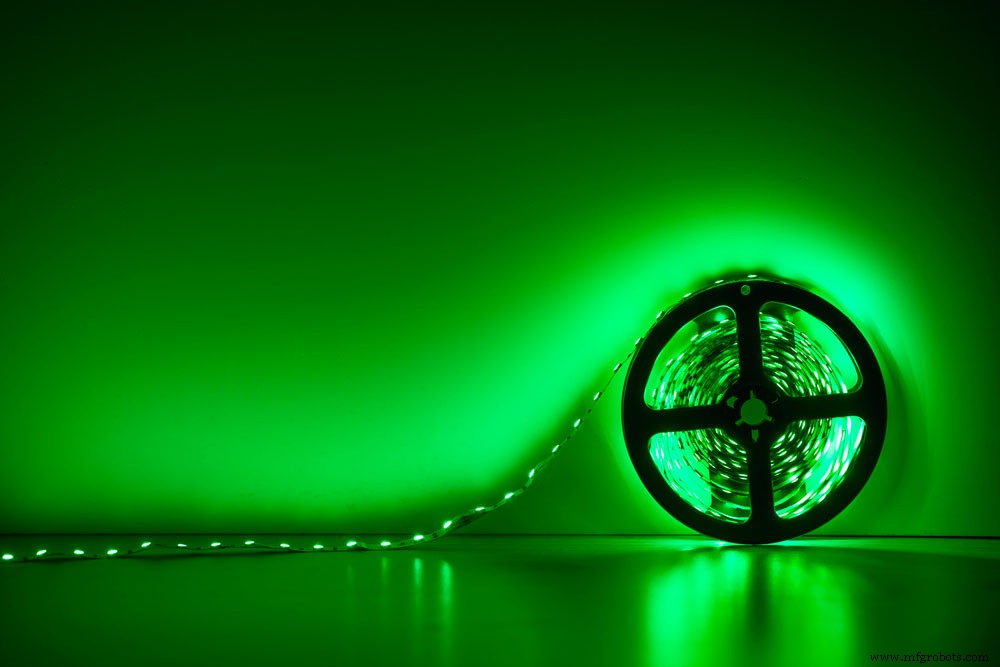
Led strip green light roll with cool light
The life expectancy of an LED light is far greater than that of a regular incandescent bulb. The typical incandescent bulb lasts around 1,000 hours. An average LED light has a lifespan of 50,000 hours. It’s possible for an LED light to endure anywhere from six to 12 years, depending on how you utilize it. This compares extremely favorably against traditional led light bulbs.
A wide color palette
Incandescent bulbs need gels or filters to create different hues and tones of light. LEDs, on the other hand, provide a wider range of colors and color temperatures without the need for gels or filters, which might burn out or fade over time. The color of the emitted light gets changed in LEDs by changing the actual diode ( or material) used.
This is important to consider if you’re using LEDs for specific tasks like growing plants indoors because different colors of light can affect plant growth. For example, blue light helps plants grow taller, while red light helps them produce more flowers.
Eco-friendly
LEDs are eco-friendly in multiple ways. They don’t contain harmful materials like mercury found in CFLs. They also don’t produce UV rays or release toxic chemicals into the air as HIDs do.
In addition, LEDs are recyclable, so once they’ve reached the end of their lifespan, you can recycle them instead of throwing them away.
Design Flexibility
Another advantage of LEDs is that they come in various shapes and sizes. This gives you more design flexibility when choosing led lighting for your home or business.
For example, you can find LED bulbs that look like traditional incandescent bulbs, as well as ones that look like CFLs and HIDs. You can also find LED bulbs with different types of bases, such as E26, E12, and GU24.
High brightness and intensity
LEDs also have high brightness and intensity. This means that they can provide better lighting for your home or business than other types of standard bulbs.
Dimming Capabilities
You can use LEDs at power levels ranging from 5% to 100%, with a success rate of over 90%. Some lighting technologies, such as metal halide, can only be dimmed at a power level of 20% to 50%.
And the dimmer switch may help you whether you want white light or warm white.
Directionality
LEDs, unlike incandescent bulbs, don’t distribute their light in all directions. This helps to minimize energy consumption since no light is lost or trapped inside reflectors and diffusers, which can retain approximately half of the generating light from exiting the bulb. LEDs are great for applications like task lighting and recessed downlights because of their directional light output.
No Heat or UV Emissions
If you’ve ever attempted to change a dull incandescent light bulb after it has fallen out, you know how hot they get when they’re in use. Traditional lighting sources, such as incandescent bulbs, turn more than 90% of the energy they consume into heat while only utilizing 10% for illumination.
LED lights emit very little heat when turned on, making them much safer to the touch.
Additionally, LED bulbs don’t give off ultraviolet (UV) radiation like some types of lighting, such as mercury vapor lamps. This means that they won’t cause fading of fabrics or artwork and can be available in enclosed spaces without fear of UV damage.
light-emitting diodes:How to install LED lights
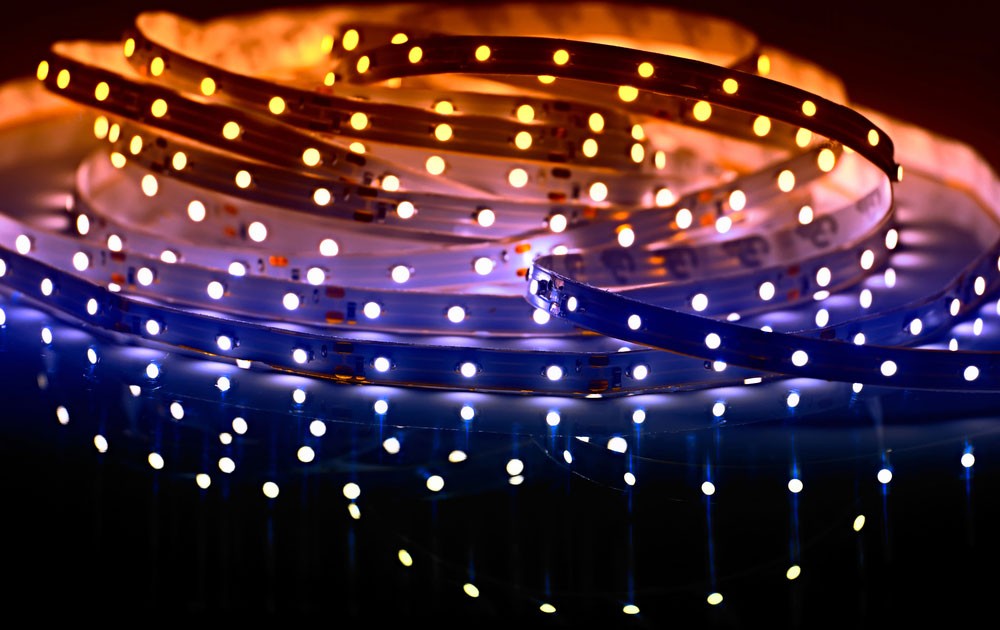
Led strip coil on dark background. Led shining diodes
Installing LED lights may seem like a daunting task, but with a few simple steps, you’ll be on your way to energy-efficient lighting in no time.
First, determine where you want to install the LED lights.
Second, gather the necessary tools and materials.
Third, follow the instructions below.
Installing LED strip lights is a fairly simple process that anyone can do without too much trouble. The first step is to find a suitable location for the lights. You’ll need to consider both the power supply and the layout of the room when choosing a location.
Once you’ve found a good spot, the next step is to gather your tools and materials. You’ll need a drill, screwdriver, wire strippers, and other basic tools. You’ll also need a power supply, LED strip lights, and connectors.
The last step is to follow the instructions for your LED strip lights. This will vary depending on the brand and model of lights you’re using. But in general, you’ll need to connect the power supply to the lights, then use the provided brackets to mount the lights in your chosen location.
If you’re looking for a more permanent solution, you can also solder the LED strip lights directly to the power supply. This will give you a stronger connection, but it’s not necessary for most projects.
The different types of LED lights available on the market
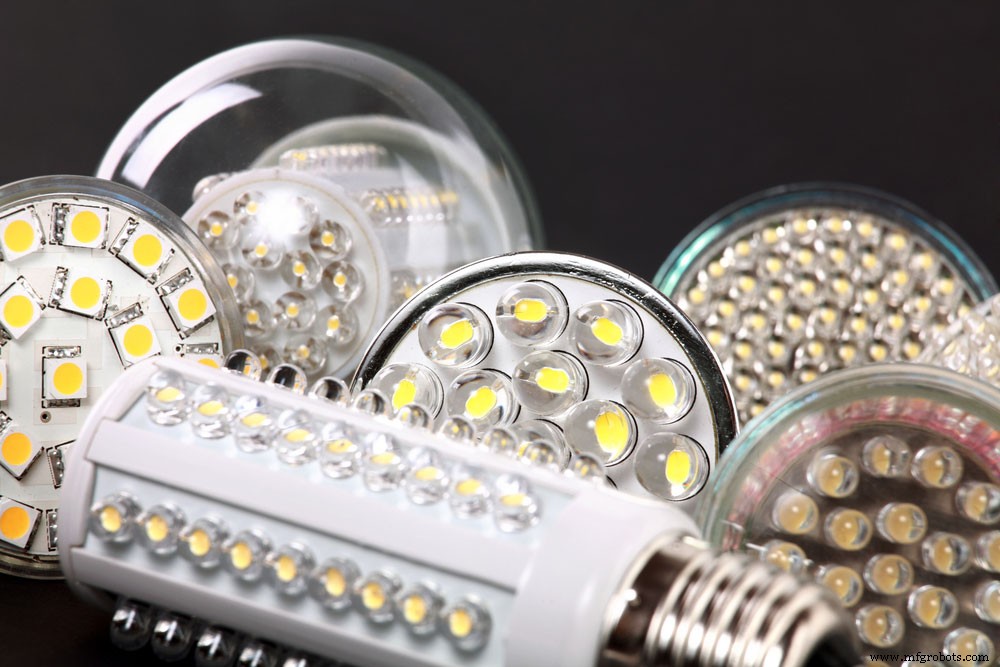
Types of LEDs:Newest LED light bulbs on black background
What is the best type of LED? One of the most common types of LEDs is the standard LED, which is a small, round bulb that can be useful in a variety of applications. Standard LEDs are available in a wide range of colors, including white, blue, green, and red.
Another type of LED is the high-powered LED, which is larger and brighter than a standard LED. High-powered LEDs often appear in outdoor applications, such as street lights and wall sconces.
LED strips are another type of LED that is becoming increasingly popular. LED strips are long; you can use thin strips of LEDs to add accent lighting to a room or provide task lighting under cabinets.
Finally, LED light bulbs are a type of LED that is available to replace traditional incandescent bulbs. LED bulbs are available in various shapes and sizes, and they can be accessible for both indoor and outdoor applications.
How Are LEDs Different than Other Lights?
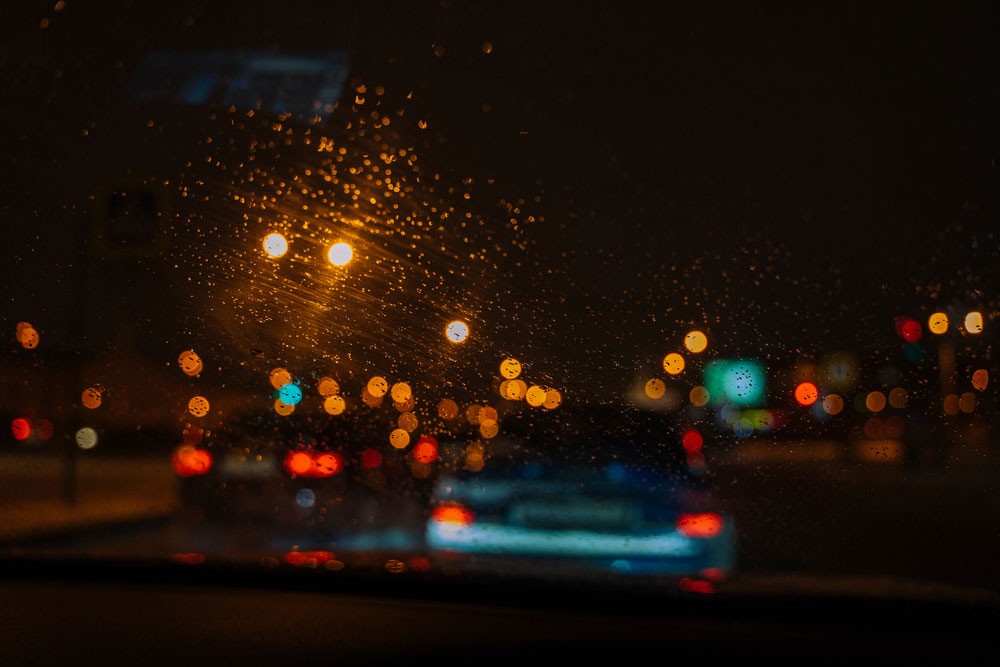
Types of LEDs:street lights
There are a few key ways that LEDs are different than other types of lights. Such as:
Heat
The advantages of LED lighting are numerous, but the main one is that it is more energy-saving than other types of lighting. Incandescent bulbs generate 90% of their energy as heat, while CFLs generate about 80% of their energy as heat. LEDs, on the other hand, generate very little heat.
Light Source
LEDs are about as big as a grain of sea salt, and their numbers are tiny, comparable to a pinch of sea salt. The light source is from a semiconductor comprising two materials joined together.
Directional
The direction emitted by LEDs is what makes these types of lights so different. It emits light in a specific direction, which reduces the need for reflectors and diffusers—these are what trap the light. Other types of lighting, reflecting its light in a certain direction, causes much-wasted light and may never even leave the fixture.
How to choose the right LED light bulbs for your needs.

Types of LEDs:How to choose
Before buying LED lights, there are a few things and variables to consider.
Types of LED:Make a list

Types of LED:The person filling out a to-do list
Count the amount and kind of light fixtures in your house.
How much are you willing and able to spend on LED lights? You may be able to find some good quality, affordable options if you take the time to look around.
Determine the types of light bulbs you need.
Not all rooms in your house will require the same light bulbs. Consider the function of each room when making your decision.
– For example, you may want brighter lights in the kitchen to see while you’re cooking.
– Or, you might prefer softer light in the living room to create a relaxing atmosphere.
Types of LED:Think about the color of light.
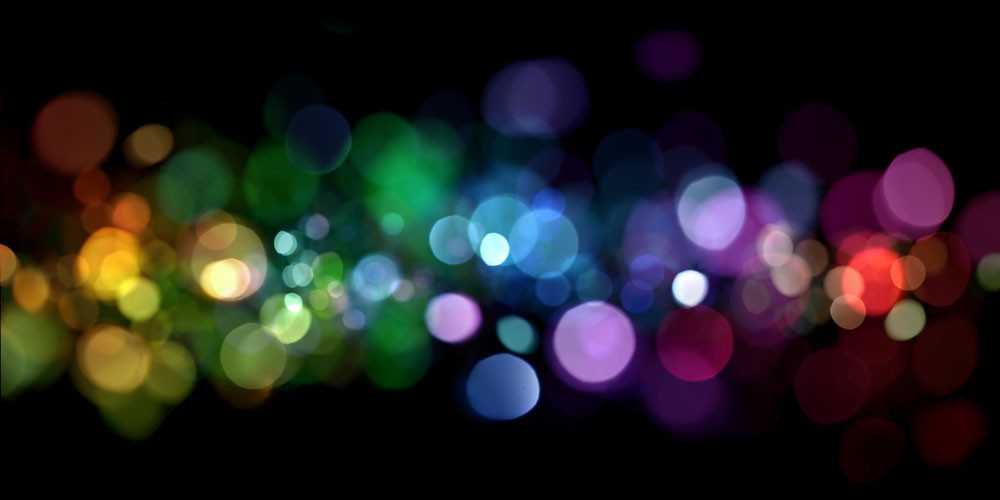
Types of LEDs:the color of light
What color of light do you want to illuminate your space?
White light is the most common, but you can also find LEDs in other colors like yellow, green, and blue.
Some people prefer a certain color of light for specific rooms in their house. For example, blue light might be calming in a bedroom, while white light could help you stay alert in a home or commercial lighting.
You should also consider the color temperature of the light.
-Measure this in Kelvin and it determines how warm or cool the light will appear.
– For example, a bulb with a color temperature of 2700K will emit a warm, yellow light, while one with a color temperature of 6000K will emit a cool, white light.
Brightness or Lumens
The brightness of an LED is important. You need to pick the proper brightness level based on your needs. If you have a little room, you’ll want a low brightness setting, but if you have a big space, you’ll need more light, which means high brightness LEDs ( inorganic LEDs).
The type of light you need to install at a location also influences the cost. The lumens measure the amount of light supplied by an LED in a unit time span. The number of fixtures you’ll need to install is up to the area’s size and how many people will be using it.
Type of LED Light
The first step is to determine the type of LED light you require. LED lights are available in various forms for various applications, with several different types of LED strip lights, tiny lights, halogen bulbs, and fixtures.
If you want to grow plants in your home using LED Grow Lights, you’ll need them. If you’re looking for tiny LED lights for decoration, get colorful mini-LEDs (white LEDs, blue LEDs) and cool light.
Types of LED:Calculate your financial and environmental savings
LEDs, like all other bulbs, come in a variety of shapes and sizes. They are one of the more costly bulb types available today; however recent advancements in LED technology have brought the price down. Many electric utility companies provide incentive programs to help you save money on the upfront cost of LEDs. LED lights are an investment, but they will save you money in the long run.
In addition to saving you money, LEDs are also more environmentally friendly than other bulbs. Besides, they are available in various sizes, shapes, and colors. You can even get mini-LEDs that are small enough.
Types of LED:Do LEDs need a Heat Sink?
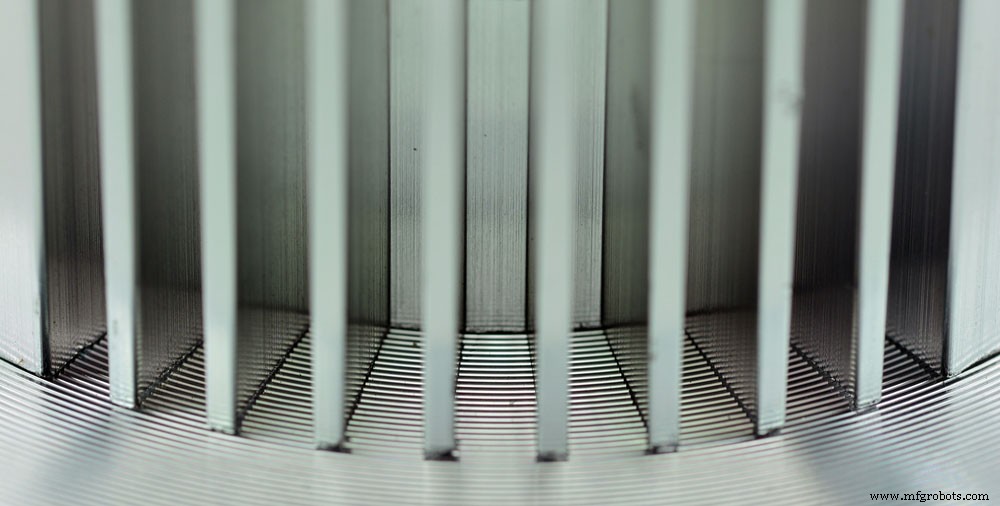
Types of LEDs:Detail of an aluminum heat sink from a led lamp for power dissipation
是的。 LED light strips require heat sinks or channels to remove the heat from them and disburse it back into the ambient air. LED strips will suffer rapid deterioration.
总结
LEDs come in all shapes and colors, making them a versatile lighting option for your next project. When choosing an LED, it’s important to consider the color, brightness, and viewing angle of the light. There are also different types of LEDs available, depending on your needs. We hope this post has given you a better understanding of the different types of LEDs available and how to choose the right one for your project. Are there any other questions you still have about LEDs? Let us know in the comments below!
工业技术


